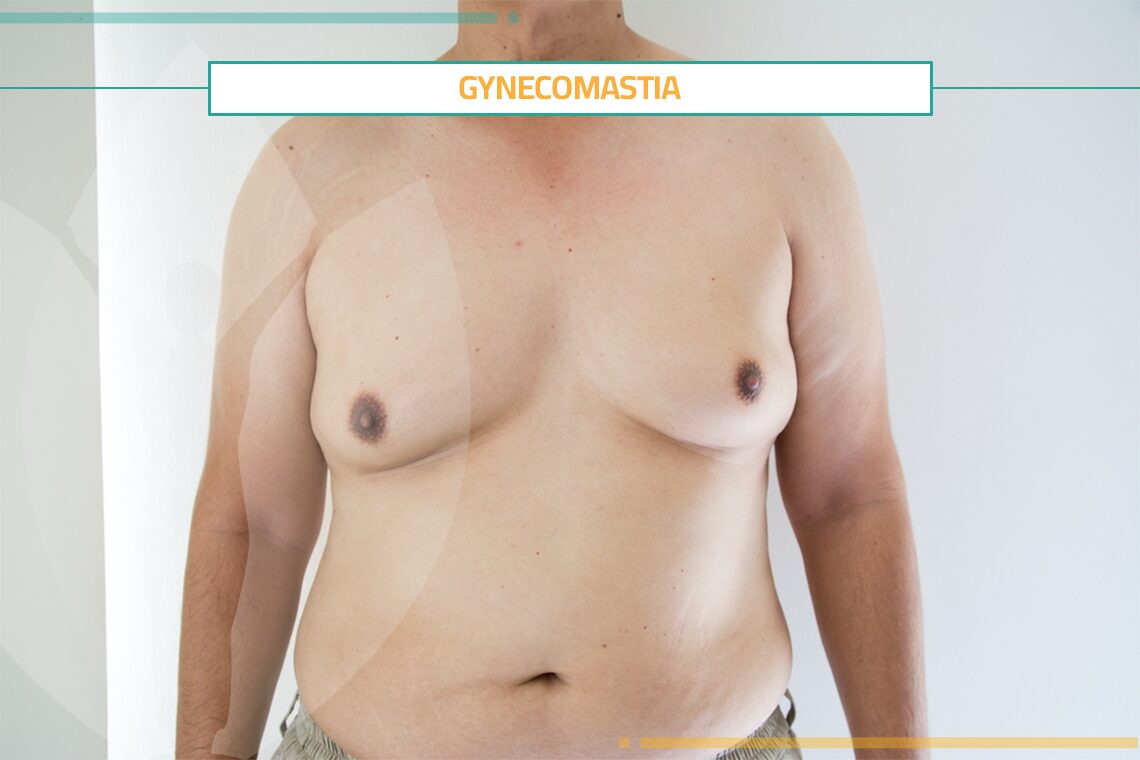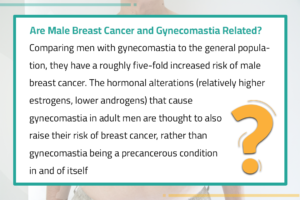Gynecomastia
Gynecomastia is a condition characterized by the enlargement of male breast tissue, resulting in a more feminine appearance. It is often benign, but can cause significant embarrassment and psychological distress for those affected. Understanding the causes, symptoms, and available treatment options for gynecomastia can provide valuable information for individuals dealing with this condition.
Breast Enlargement in Males
As known by gynecomastia, can be a source of significant psychological distress and self-consciousness. It is important to understand that gynecomastia can be caused by hormonal imbalances, certain medications, obesity, and underlying medical conditions.
Additionally, the main symptom of it is the enlargement of breast tissue in males, which may manifest as firm or rubbery masses under the nipples, resulting in a more feminine chest contour. When dealing with it, it is essential for healthcare professionals to take a detailed medical history and perform a thorough physical examination in order to distinguish between normal developmental variants and pathological causes.
It’s important to consult a healthcare professional for an accurate diagnosis and personalized treatment plan. If you are experiencing symptoms of it, reach out to a healthcare provider to discuss your concerns and undergo a comprehensive evaluation. Once a diagnosis of it is confirmed, treatment options can be explored.
Read about the advantages of Nose Lift in Istanbul
Gynecomastia Causes
- It can be caused by a variety of factors. These include hormonal imbalances, certain medications, obesity, and underlying medical conditions.
- Hormonal imbalances, such as an increase in estrogen levels or a decrease in testosterone levels. They can disrupt the normal balance of male and female hormones in the body, leading to the development of breast tissue in males.
- Certain medications, such as those used to treat prostate cancer, certain antidepressants.
- Anabolic steroids, can also contribute to the development of gynecomastia.
Dental Implant the best solution for missing teeth
Gynecomastia Signs
- The main symptom is the enlargement of breast tissue in males. This may manifest as firm or rubbery masses under the nipples, resulting in a more feminine chest contour.
- Other symptoms may include breast tenderness or pain.
- Medical History and Physical Examination: When evaluating gynecomastia, it is important for healthcare professionals to take a detailed medical history and perform a thorough physical examination. This allows them to distinguish between normal developmental variants and pathological causes of gynecomastia.
- During the medical history, healthcare professionals will inquire about any medications or supplements being taken, as certain drugs can contribute to gynecomastia. They will also ask about the presence of any underlying medical conditions and inquire about any family history of gynecomastia.
Gynecomastia Treatments Options
If you are considering seeking treatment for it, it’s essential to understand the available options and consult with a healthcare professional to determine the most suitable course of action for your individual needs. Once a diagnosis of it is confirmed, healthcare professionals can discuss potential treatment options with the patients. Treatment options for it include watchful waiting, lifestyle changes, medication, and surgery
- Watchful waiting may be appropriate for individuals with mild cases of it, as the condition may resolve on its own over time.
- Lifestyle changes, such as weight loss and regular exercise, can also help reduce the appearance of it.
- In cases where it is caused by an underlying medical condition or medication, treating or discontinuing the medication may be necessary. In some cases, medication may be prescribed to reduce the size of breast tissue or alleviate symptoms.
- Surgery is another option for individuals with severe or persistent gynecomastia. During surgery, the excess breast tissue is removed to create a more masculine chest contour. Gynecomastia, the presence of female-like mammary glands in males, can be a source of significant psychologic stress and self-consciousness.
- A thorough physical examination is also crucial in diagnosing gynecomastia. This may involve palpation of the breast tissue to assess the size, texture, and location of any masses. In some cases, further tests such as blood tests, hormone level assessments, or imaging studies like mammograms or ultrasound may be recommended to determine the underlying cause of it.
Possible Complications
While gynecomastia is not typically a harmful condition, it can lead to substantial psychological distress and self-consciousness. In addition to the emotional impact, there are certain complications associated with gynecomastia that individuals should be aware of.
One potential complication of if is the development of breast tissue tenderness or pain, which can interfere with daily activities and cause discomfort. Additionally, some individuals may experience social or emotional implications such as reduced self-esteem, body image issues, and avoidance of certain activities due to embarrassment.
It’s important for individuals with gynecomastia to seek support and guidance from healthcare professionals to address these complications and receive appropriate care. By discussing concerns with a healthcare provider, individuals can explore treatment options and develop coping strategies to manage the physical and emotional effects of gynecomastia.
If you are experiencing symptoms of it or are concerned about potential complications, it’s essential to consult a healthcare provider for personalized evaluation and support. Together, you and your healthcare provider can navigate the complexities of it and determine the most suitable course of action for your individual needs.
How Is It Diagnosed?
Gynecomastia is defined as the existence of breast tissue in a man that is more than 0.5 cm in diameter. Gynecomastia, as was previously mentioned, is the development of real breast (glandular) tissue, which is typically found surrounding the nipple. A build-up of fat is not regarded as real gynecomastia.
Gynecomastia is typically detectable by physical examination. A thorough medical history that includes drug and medication use is also crucial. A medical professional may prescribe a mammography if cancer is suspected. In some circumstances, further testing could be advised to assist determine the etiology of gynecomastia. Blood tests to assess thyroid, kidney, and liver function are among them.
Which Medications Are Prescribed to Treat It?
In many cases, observation is preferable over particular therapy for gynecomastia because it typically goes away on its own, especially in guys entering puberty within six months. The cornerstones of treatment include stopping medicines and treating any underlying illnesses or disorders that contribute to men’s larger breasts.
It can be treated medically, however there is little information on how successful these treatments are. The FDA has not approved any pharmaceuticals for the treatment of gynecomastia; yet, the following drugs have been used to treat the condition:
- For older men with low testosterone levels, testosterone replacement therapy has proved successful. However, it is ineffective for men with normal testosterone levels.
- It can be treated with clomiphene. The maximum duration of use is six months.
- In cases of gynecomastia, the selective estrogen receptor modulator (SERM) tamoxifen has been demonstrated to decrease breast volume; nevertheless, it was not able to completely remove the breast tissue. Teenage gynecomastia that is severe or painful is frequently treated with this kind of therapy.
What about Gynecomastia Treated Surgically? Is There a Cure?
Early treatment of gynecomastia with medication is more beneficial because scarring usually appears after a year or so. The only viable treatment when the tissue has gotten scarred is surgical excision. Because drugs are unlikely to be useful in this situation.
When medication therapy have failed to help restore a normal breast appearance, or in severe cases of long-term gynecomastia, reduction mammoplasty, sometimes known as breast reduction surgery, has been utilized. Gynecomastia is usually not linked to persistent issues.
 Gynecomastia: Is It Preventable?
Gynecomastia: Is It Preventable?
It is impossible to stop gynecomastia brought on by hormonal changes brought on by maturation or growth. Only to the extent that the underlying or causative issue is preventable may gynecomastia associated with medical conditions be avoided.






